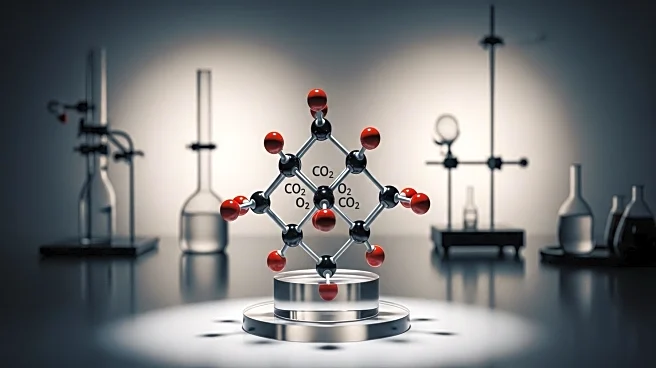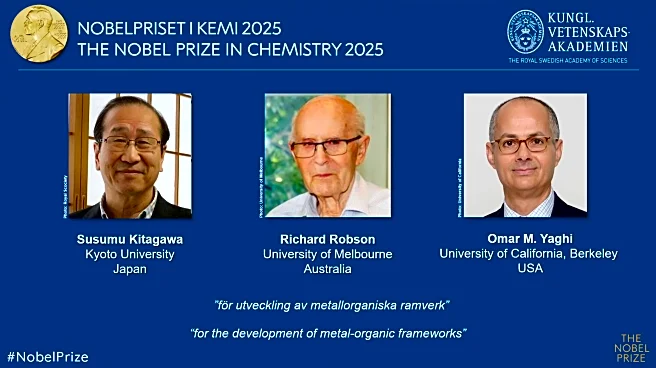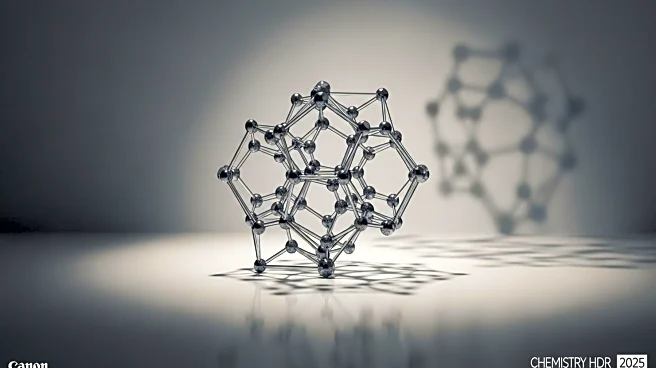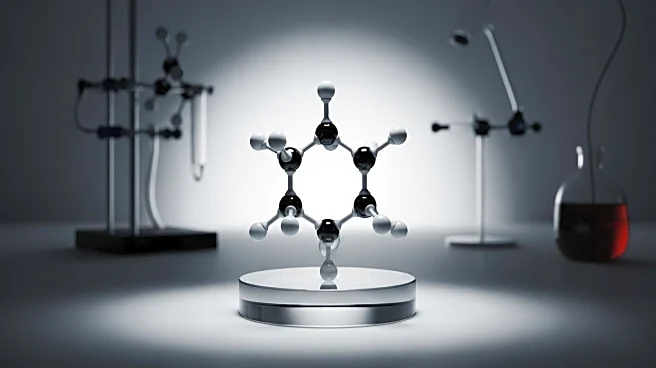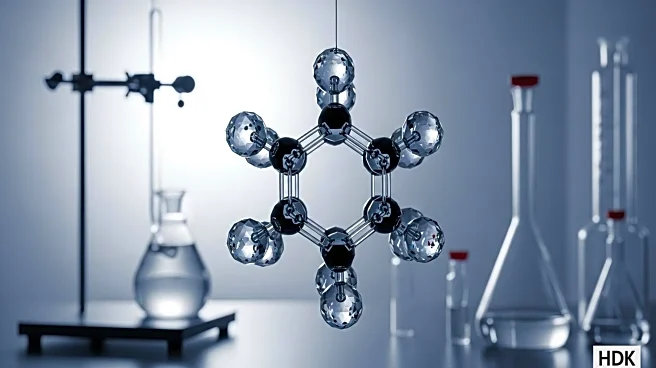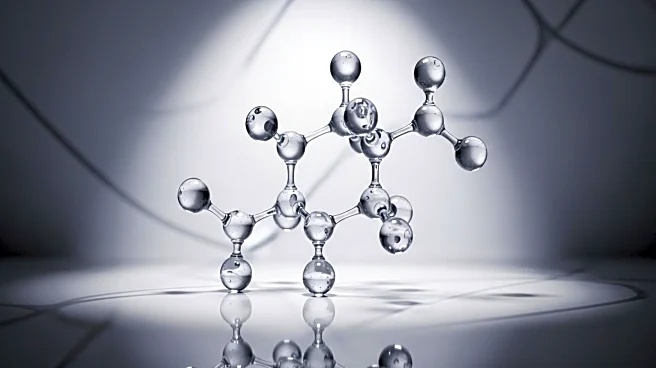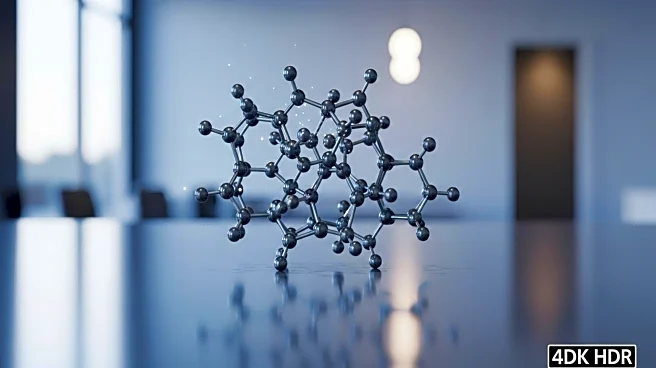What is the story about?
What's Happening?
The Nobel Prize in Chemistry has been awarded to Susumu Kitagawa, Richard Robson, and Omar M. Yaghi for their development of metal-organic frameworks. These molecular structures can trap large quantities of gas, potentially addressing greenhouse gas emissions and water scarcity. The frameworks, likened to magical containers, allow for efficient storage and release of gases and liquids. The scientists' work, spanning decades, has led to stable atomic structures with customizable holes for specific molecules. This innovation could revolutionize industries by enabling targeted gas storage and drug delivery. The award highlights the potential of these frameworks to tackle global challenges such as pollution and climate change.
Why It's Important?
The Nobel-winning research offers promising solutions to environmental issues, including climate change and water scarcity. By enabling efficient gas storage, these frameworks could help reduce greenhouse gas emissions, contributing to global efforts to combat climate change. Additionally, their potential use in harvesting moisture from desert air could provide clean drinking water in arid regions. The frameworks' application in targeted drug delivery could improve medical treatments, offering controlled release of medications. The recognition of this research underscores the importance of scientific innovation in addressing pressing global challenges, potentially influencing policy and investment in sustainable technologies.
What's Next?
Researchers worldwide are exploring the practical applications of metal-organic frameworks, aiming to translate laboratory success into real-world solutions. Challenges remain in adapting these structures for use in varying environmental conditions, such as temperature and pressure. Industries may invest in further development to harness the frameworks' potential for environmental and medical applications. The Nobel Prize may spur increased funding and collaboration in the field, accelerating advancements in sustainable technologies. As scientists continue to refine these structures, their impact on industries and global environmental efforts could grow, shaping future strategies for climate change mitigation and resource management.
AI Generated Content
Do you find this article useful?
